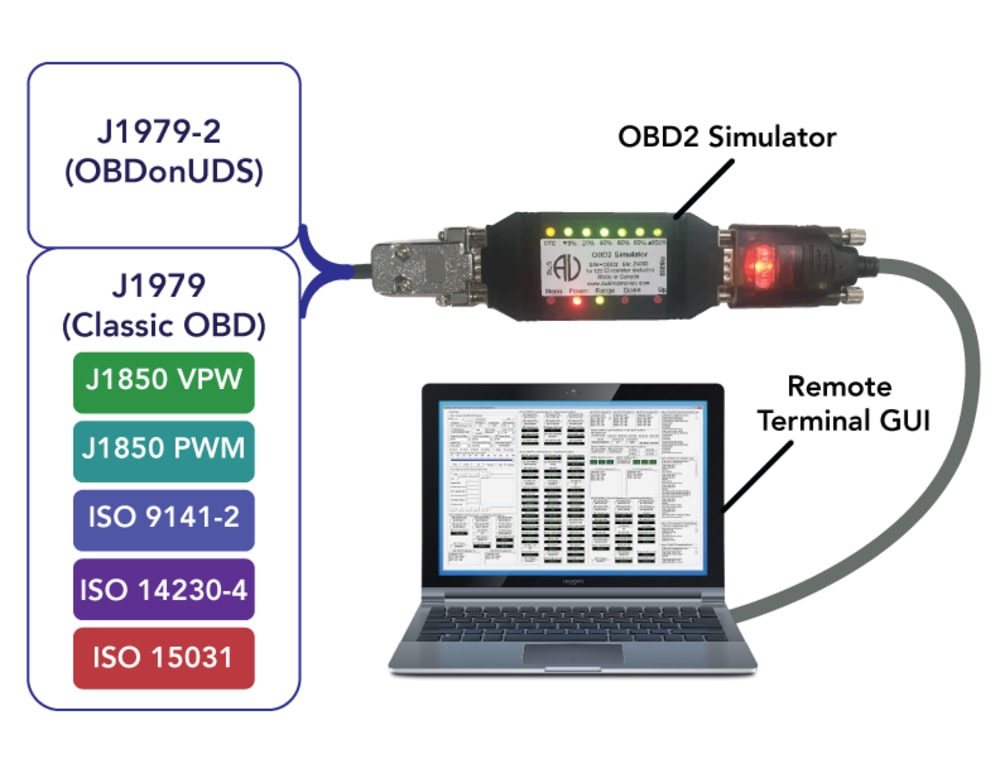The OBD2 Simulator includes a handheld dongle and a remote terminal Graphic User Interface (GUI).
OBD2 Simulator can generate OBD2 signals for up to three Electronic Control Units (ECU): Engine, ABS, and Transmission. These signals are based on the SAE J1979 (classic OBD) and SAE J1979-2 (OBDonUDS) protocols. OBD2 Simulator covers multiple classic OBD2 protocols: SAE J1850 VPW, SAE J1850 PWM, ISO 9141-2, ISO 14230-4, and ISO 15031.
OBD2 Simulator is a plug-and-play device. Software setup experience or OBD2 protocol configuration skills are not necessary to use the OBD2 simulator.
OBD2 Simulator has a DB9 male "BUS" interface for power supply and OBD2 network connection purposes. After connecting to a network, apply the power, and the simulator will automatically generate OBD2 signals.
The OBD2 Simulator also has an RS232 interface for device settings such as CAN baud rate setting, source address configuration, license management, computer remote control, and in-field firmware updates.
The firmware implements bootloading technology. In the case of protocol updating, firmware can update through the bootloading process. Therefore, there will be no shipping need for firmware updating purposes, effectively saving time and cost.
The OBD2 simulator is convenient for automotive OBD2-related product development, validation, assembly line testing, incoming inspection, and business demonstrations. The OBD2 simulator can generate J1979 and J1979-2 signals like how actual vehicles and engines do. By testing products at desk, the OBD2 simulator helps avoid unnecessary power usage, equipment, and trip time. This reduction in fuel and traveling allows the decrease of Carbon Dioxide release level, thus both protecting the environment and validating automotive components, all at the comfort of your desk.
Like this entry?
-
About the Entrant
- Name:Chaonan Chen
- Type of entry:teamTeam members:
- Huihui Duan
- Even Duan
- Efan Duan
- Patent status:none






